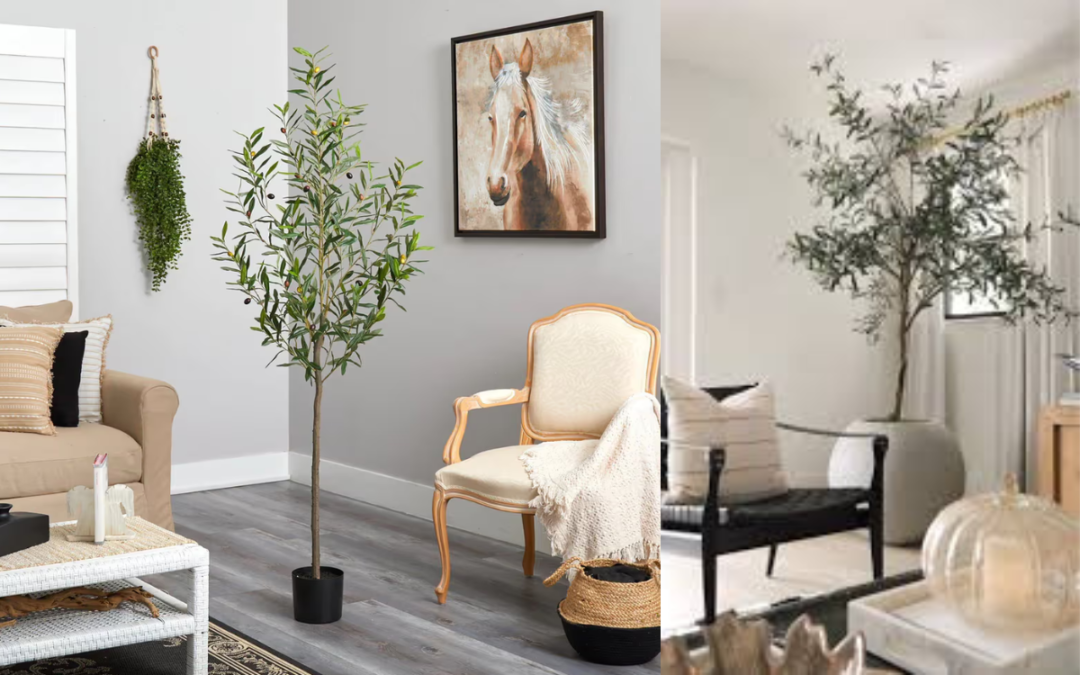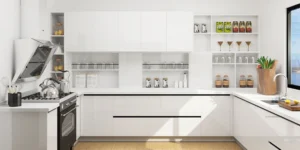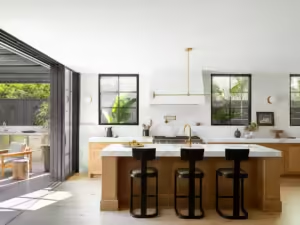Faux Olive Tree: A Stylish and Low-Maintenance Home Decor Trend?

In interior design, greenery has always played an essential role in enhancing the aesthetic appeal of any space. Whether lush fern or a delicate succulent, plants breathe life into our homes, creating a sense of calm and harmony. However, only some have the time, space, or green thumb to maintain natural plants. Enter the faux olive tree, a stylish, low-maintenance alternative taking the decor world by storm. From living rooms to offices, faux olive trees are the perfect solution for adding natural beauty without the hassle of genuine plant care.
What Is a Faux Olive Tree?
A faux olive tree is an artificial plant designed to mimic the appearance of a real olive tree. It features realistic-looking leaves and branches, often crafted from high-quality silk or plastic, and sometimes even includes fake olives for added authenticity. These faux trees come in various sizes, from miniature tabletop versions to large, statement-making floor models, making them versatile enough for any room or decor style.
Why Choose a Faux Olive Tree?
There are many reasons why faux olive trees are becoming increasingly popular. Here are some of the top benefits:
- No Maintenance: Unlike natural plants, faux olive trees don’t need water, sunlight, or pruning. You can place them anywhere in your home, even in areas with little to no natural light.
- Durability: High-quality faux plants are built to last. They won’t wilt, wither, or drop leaves, ensuring your home looks its best.
- Allergy-Friendly: A faux olive tree is the perfect alternative for people with allergies to pollen or plant-related irritants. You can enjoy the beauty of nature without sneezing or itchy eyes.
- Versatility: Whether your home has a modern, rustic, or Mediterranean vibe, it can fit seamlessly into any decor style.
How to Style a Faux Olive Tree in Your Home
Faux olive trees are incredibly versatile and can be styled in various ways to elevate your space. Here are some creative ideas for incorporating this decor trend into your home:
- In the Living Room
The living room is often the focal point of a home, and an olive tree can add a touch of elegance and warmth to this central space. Place a tall olive tree in a decorative planter next to your sofa or entertainment center to create a statement piece. The leaves’ subtle green tones complement various color palettes, from neutral to bold.
- In the Dining Room
A faux olive tree can bring sophistication to your dining area. Consider placing a tall faux tree in a corner to balance the space if you have a large dining room. For smaller dining rooms, a tabletop version on a buffet or side table can add a natural touch without overwhelming the room.
- In the Entryway
First impressions matter; your entryway is the perfect spot to make a stylish statement with a faux olive tree. Place a mid-sized tree next to your entry table or bench to create a welcoming atmosphere for guests. The timeless beauty of olive trees can also complement various seasonal decor, from wreaths to candles.
- In the Office
If you work from home, adding greenery to your workspace can increase productivity and create a calming environment. A faux olive tree is ideal for home offices, as it requires no upkeep and can be placed in areas with limited sunlight. Choose a tree that matches the scale of your office, whether it’s a small desktop plant or a floor model.
- On the Patio
While faux plants are typically used indoors, they work well in covered outdoor spaces. A faux olive tree on a covered patio or balcony can add a Mediterranean touch to your outdoor decor. Just be sure to keep it away from direct sunlight or extreme weather, as this can affect the longevity of the artificial materials.
Faux Olive Trees vs. Real Olive Trees: Which is Better?
When it comes to choosing between a genuine and faux olive tree, there are several factors to consider:
- Maintenance
Real olive trees require regular care, including watering, pruning, and exposure to sunlight. They can also be susceptible to pests and diseases, which can be time-consuming and costly. A faux olive tree, on the other hand, requires no upkeep and stays looking fresh year-round.
- Cost
While real olive trees can be expensive to purchase and maintain, they are a one-time investment. High-quality artificial trees can be pricey, but they are durable and long-lasting, making them a cost-effective option in the long run.
- Aesthetic Appeal
Real olive trees have a natural beauty that can’t be replicated, but modern faux trees come remarkably close. With advancements in manufacturing, today’s faux olive trees are designed to look and feel incredibly realistic, down to the texture of the leaves and branches.
- Environmental Impact
There is an ongoing debate about the environmental impact of faux plants versus natural plants. While faux plants are made from synthetic materials, they don’t require water or fertilizers, which can reduce their overall environmental footprint. However, real plants contribute to air purification and the natural ecosystem. Ultimately, the decision comes down to personal preference and lifestyle.
Choosing the Right Faux Olive Tree for Your Home
When selecting a faux olive tree for your home, there are several factors to keep in mind:
- Size: Consider the size of the space where you plan to place the tree. For large, open areas, opt for a taller tree (5-7 feet). Smaller spaces or tabletops may call for a more compact version.
- Material: For a realistic appearance, look for trees made from high-quality materials like silk or polyethylene. Cheaper plastic versions may have different visual appeal or durability.
- Planter Style: The type of planter you choose can enhance the overall look of your faux olive tree. From rustic woven baskets to sleek ceramic pots, the suitable planter can elevate the aesthetic of your tree and complement your existing decor.
Caring for Your Faux Olive Tree
One of the main advantages of a faux olive tree is its low-maintenance nature. However, some care is still necessary to keep it looking its best. Here are some simple tips for maintaining your faux tree:
- Dust Regularly: Over time, faux plants can accumulate dust, dulling their appearance. Use a microfiber cloth or a soft brush to remove dust from the leaves and branches gently.
- Avoid Direct Sunlight: Prolonged exposure to direct sunlight can cause the colors of faux plants to fade. Place your faux olive tree in a spot where it will be shielded from harsh sunlight.
- Rotate Occasionally: To ensure even wear and prevent fading on one side, rotate your every few months.
Conclusion
A faux olive tree is more than just a decor trend—it’s a versatile, stylish, and low-maintenance option that can enhance any room in your home. Whether you’re looking to add a touch of greenery to your living room, dining area, or office, a faux olive tree provides the natural beauty of an actual plant without the hassle of upkeep. With realistic designs and long-lasting durability, invest in timeless decor that will continue to make a statement for years.
Embrace the beauty and convenience of a faux olive tree in your home, and enjoy the benefits of greenery without the stress!



